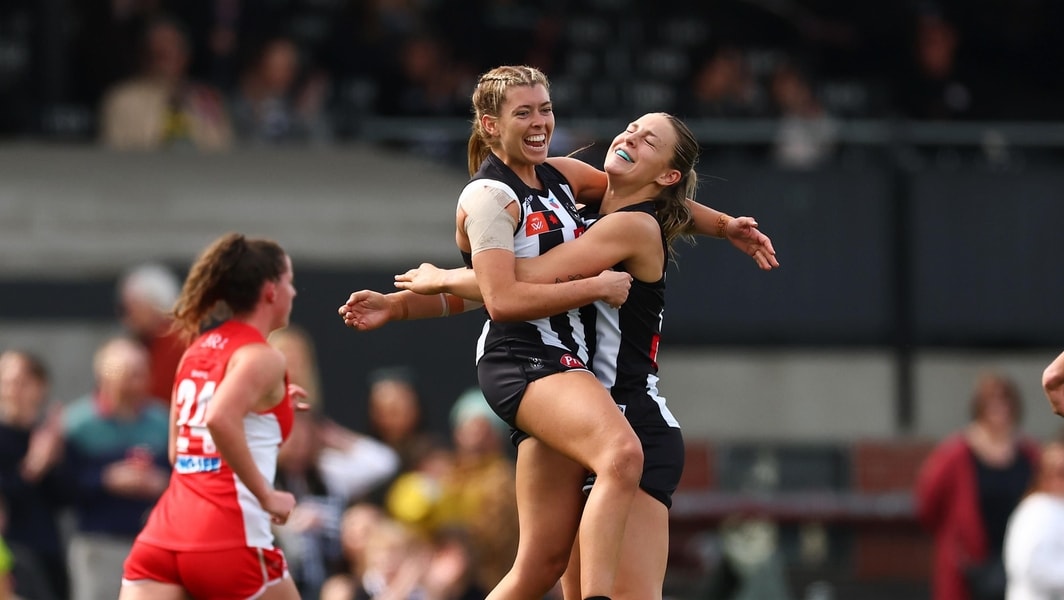THE ‘EIGHT-POINT game’ is a staple at the tail-end of a season, but such is the increasing competitiveness between teams in the AFLW, they’re occurring much earlier in 2025 than in seasons past.
North Melbourne is far and away the front-runner of this season, with Melbourne quickly establishing itself in second place (thanks in part to a generous draw and healthy firepower), but the logjam from third to 14th is getting more congested by the week.
An eight-point game is a theoretical concept.
With four points on offer per victory, which makes up the ladder standings, an eight-point game means you’ve both secured a win and denied your opponent – who is competing for a similar spot in the top eight – a crucial four points.
St Kilda improved its standings to four wins and three losses on the back of its come-from-behind victory against Port Adelaide on Sunday.
If the Power had saluted, they’d be 3-4, rather than 2-5, and the Saints would also be sitting on 3-4. Instead, Lauren Arnell’s side has slid to 14th, while Nick Dal Santo’s team is up in ninth.
An eight-point game can also occur within the top eight – Adelaide’s victory over Sydney has assured the Crows of a four-point buffer over the sixth-place Swans, and could be a crucial win come the race for the top four.
It should be noted that the 12-round season (the longest we’ve ever had) is also a contributing factor, with not as much time available as in the men’s competition for the cream to rise to the top.
There’s only a handful of teams you’d draw a line through for finals in 2025, including Richmond, Gold Coast, Collingwood and probably Greater Western Sydney (with serious remedial work needed on its percentage of 65).
But even the Pies pulled off a shock victory over Sydney a few weeks ago, the Swans having been undefeated from their first month of footy at the time, showing the bottom four can still have an impact on November’s final standings.

Action from the AFLW Round five match between Collingwood and Sydney at Victoria Park, September 13, 2025. Picture: Getty Images
The old expansion four of Essendon, Hawthorn, Port Adelaide and Sydney have all now had four pre-seasons under their belt, while the middle-rung teams have invested heavily into strength and conditioning, meaning the fitness advantage that Brisbane and Adelaide held for so long is now being eroded.
Game plans are more sophisticated, but for mid-range sides there is still a reliance on a number of stars.
At the same time, team defences have become sturdier, meaning match-winners don’t have quite as much free rein on a game, and it’s harder to do it off a sole boot.
It means control is generally won as a collective, rather than by an individual, leading to wilder momentum swings.
There are more avenues to goal as the ball is switched across the field with ease, on the back of better foot skills.
Cumulatively, it all means there are more upsets on the cards.
More upsets equals a very even ladder, and a very even ladder increases the rate of eight-point games.
Geelong (10th, 12 points, 95.4 per cent) takes on Carlton (fifth, 20 points, 118.8 per cent) on Sunday in what shapes as another eight-point game, given a Cats win would send them into the top eight, while denying the Blues a chance to nestle themselves in the top four.


